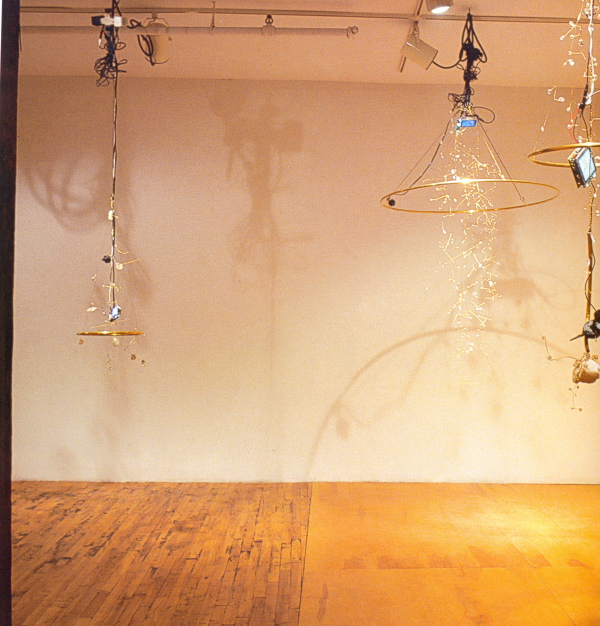Some notes about the titles of the sculptures
The Boyd Cycle is a widely adopted military strategy developed by Col. John Boyd, USAF. He was charged with determining why our fighter pilots were successful in the Korean War, in spite of having planes that were inferior to that of their enemy. He discovered two primary reasons; our planes offered the pilot a better view of the battle scene than the ones flown by the enemy and that our pilots were trained to change tactics if necessary. Boyd developed his famous strategy usinq those factors. The Boyd Cycle consists of four components that are enacted and repeated constantly to form an agile battle strategy. They are referred to as 'O.O.D.A.' ; Observe, Orient, Determine and Act.
Contemporary military strategy uses implanted chips in "war fighters" to aid them in cycling their O.O.D.A. loops. An elaborate satellite system links the "user" to both data and visual information. More technology has been developed to protect the system against "cascading deterioration" if subjected to a variety of vulnerabilities. Erroneous information or "syntactic attack," is an espionage threat. Additionally, the chip itself will disintegrate and be useless if the "friendly user" defects. It will also disintegrate in the "unfortunate circumstance" of a "diseased war fighter."
Not surprisingly, the Boyd Cycle military strategy has long been in use as a model for corporate business strategy. It is taught in business schools as a solid basis from which to form winning strategies in beating the competition. Dan Devine

